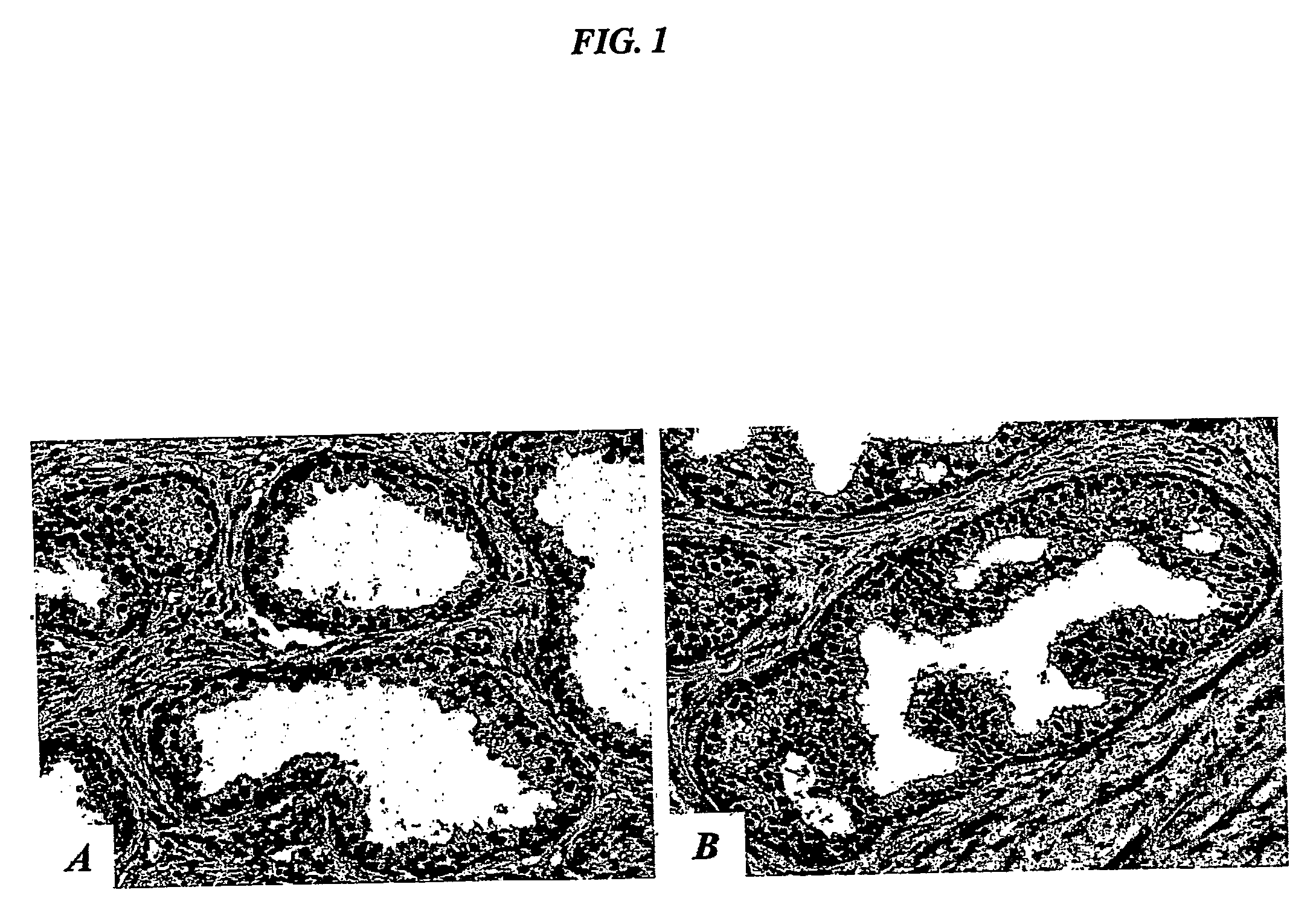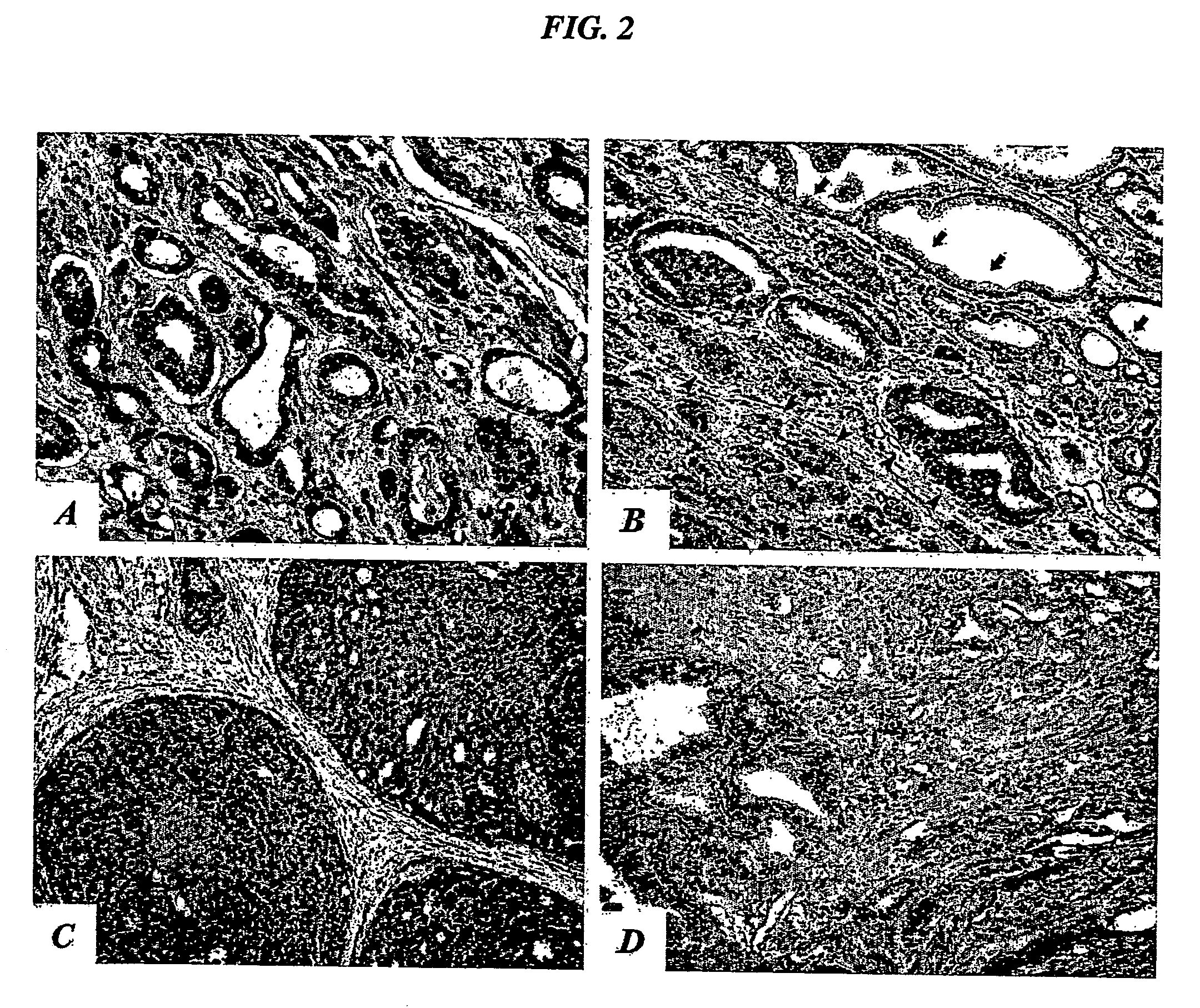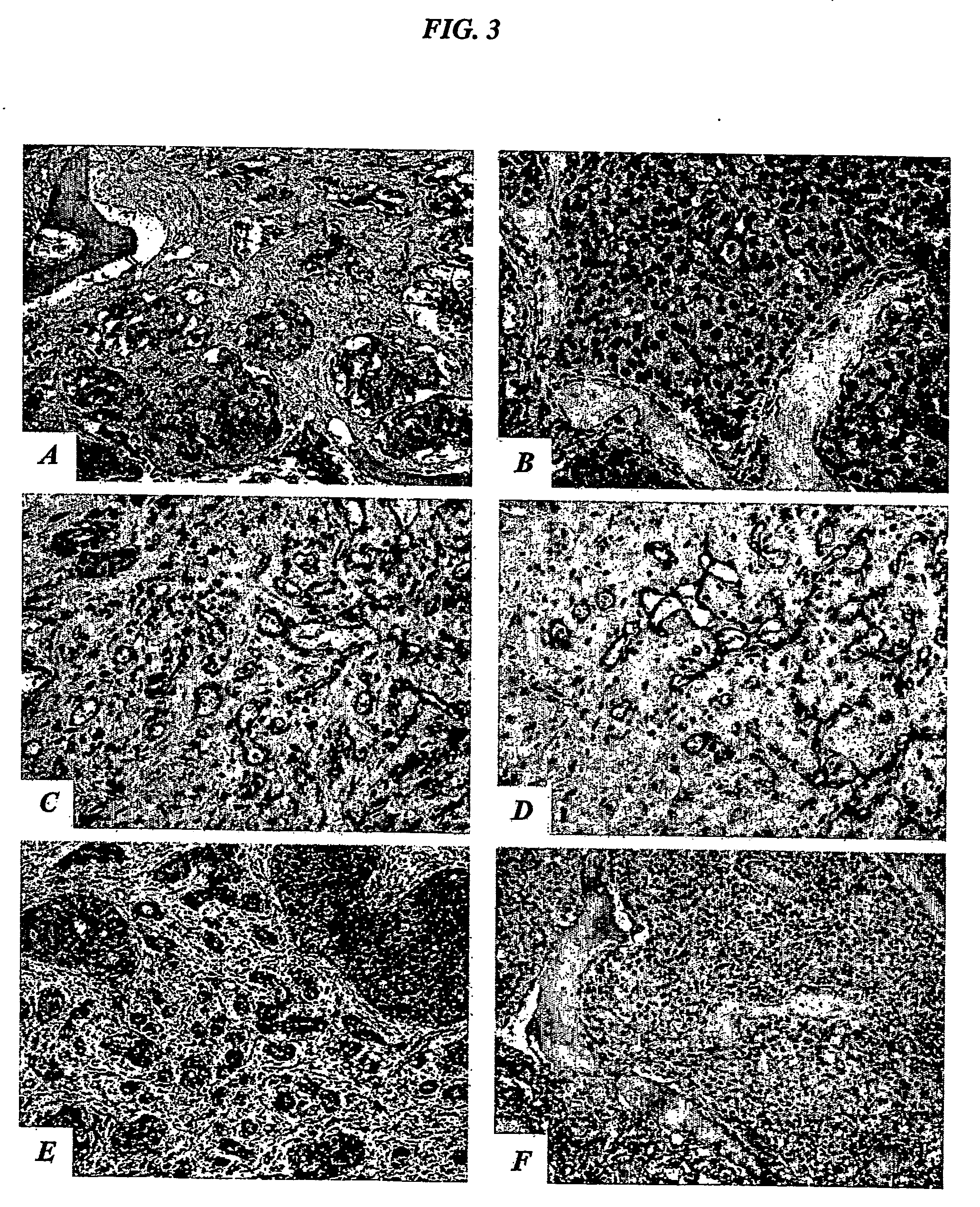Compositions and methods of use of targeting peptides for diagnosis and therapy of human cancer
a technology of targeting peptides and peptides, which is applied in the direction of peptides, immunoglobulins against animals/humans, medical preparations, etc., can solve the problems of inefficient and labor-intensive removal of background phage binding by repeated washing, and limited treatment of many disease states
- Summary
- Abstract
- Description
- Claims
- Application Information
AI Technical Summary
Benefits of technology
Problems solved by technology
Method used
Image
Examples
example 1
Biopanning with Phage Display Libraries Using Human Patients
[0228] Certain of the methods and compositions of the present invention concern identification of targeting peptides for human organs, tissues or cell types by in vivo biopanning. Generally, protocols used in animal subjects, such as mice, are not suited for humans. Further, ethical considerations play a large role in human protocols. The following novel methods are preferred for use with humans, although the skilled artisan will realize that variations on the methods and compositions disclosed herein may be used within the scope of the present invention.
[0229] Human Preparation
[0230] Patients were selected for the protocol according to inclusion and exclusion criteria Inclusion criteria include: (1) patient legally declared brain dead or terminal wean patient; (2) approval of attending and / or treating physicians; and (3) approved written informed consent form signed by the patient's legally responsible family member. Ex...
example 2
Mapping the Human Vasculature by In Vivo Phage Display
[0246] The in vivo selection method discussed above was used to screen a phage library in a human subject. A pattern recognition analysis program was used to survey 47,160 tripeptide motifs within peptides that localized to the human bone marrow, fat, skeletal muscle, prostate, or skin. The results of this large-scale screening indicated that the distribution of circulating peptide motifs to different organs is non-random. High-throughput analysis of peptide motifs enriched in individual tissues revealed similarities to sequences present in candidate ligands for differentially expressed vascular receptors.
[0247] These data represent a major step towards the construction of a ligand-receptor map of human vasculature and may have broad implications for the development of targeted therapies. Many therapeutic targets may be expressed in very restricted—but highly specific and accessible—locations in the vascular endothelium. Potent...
example 3
The IL-11 Receptor as a Therapeutic and Diagnostic Target in Cancer
[0266] The preceding Example identified prostate-targeting motifs (RRAGGS, SEQ ID NO:34 and RRAGG, SEQ ID NO:35) in normal human prostate tissue. The homology of the RRAGGS (SEQ ID NO:34) motif with human IL-11 suggests that the native prostate receptor for binding of RRAGGS (SEQ ID NO:34) may be the IL-11 receptor. The present Example determined whether the IL-11 receptor could be targeted in prostate cancer, including metastatic prostate cancer.
[0267] To test the tissue specificity of the IL-11 peptide mimic, a phage overlay assay was developed to evaluate receptor-ligand interactions in tissue sections, using the motif RRAGGS (SEQ ID NO:34) (Arap et al., Nature Med. 8:121-127, 2002). Phage overlay on human tissue sections showed that the prostate-homing phage displaying an IL-11 peptide mimic specifically bound to the endothelium and epithelium of normal prostate, but not to control organs, such as skin (data no...
PUM
| Property | Measurement | Unit |
|---|---|---|
| temperature | aaaaa | aaaaa |
| ionic strength | aaaaa | aaaaa |
| temperature | aaaaa | aaaaa |
Abstract
Description
Claims
Application Information
 Login to View More
Login to View More - R&D
- Intellectual Property
- Life Sciences
- Materials
- Tech Scout
- Unparalleled Data Quality
- Higher Quality Content
- 60% Fewer Hallucinations
Browse by: Latest US Patents, China's latest patents, Technical Efficacy Thesaurus, Application Domain, Technology Topic, Popular Technical Reports.
© 2025 PatSnap. All rights reserved.Legal|Privacy policy|Modern Slavery Act Transparency Statement|Sitemap|About US| Contact US: help@patsnap.com



